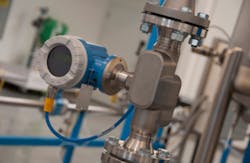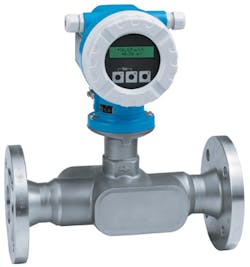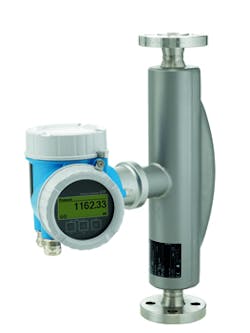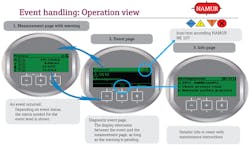Some chemical manufacturing plants are competing for survival, not only externally against other global companies, but also internally among the global facilities of their own company. Other industry sectors face similar challenges.
Process improvements to increase yield or cut manufacturing costs typically require enhanced process control, but the installed base of measurement instrumentation in a process plant may simply be unable to facilitate improvements because of age, inadequate performance, or unreliability. Maintenance cost and unscheduled process downtime for an aging process plant can be very damaging to the balance sheet. Upgrading to new, more accurate, and more reliable instrumentation can be prohibitively expensive. New plant construction must also maintain a focus on optimizing costs for the process control infrastructure. The budget approval decision for new plant construction must weigh such costs against projected market conditions for the products that the plant is intended to manufacture. In today’s volatile global marketplace, return on investment calculations for plant upgrade or new plant construction projects may go through several iterations before the trigger is finally pulled, or indeed not pulled.
This article describes advances in two-wire instrumentation, specifically in relation to flowmeters, that have taken place in the past few years, and the significant cost benefits that this new technology can realize for plant builders and operators in terms of capital investment and cost of ownership.
The significance of two-wire loop power
A survey involving 204 participants in the chemical industry across Germany, Switzerland, the UK, Canada, and the United States (Manfred Koenig, Ph.D., K.I.M. Ludwigshafen, Germany, 2006) revealed an 87 percent preference for two-wire instrumentation versus four-wire in process applications, and 89 percent for utilities. This overwhelming preference may stem from the fact that older process plants were built with two-wire, twisted-pair cable networks, connecting all process units and measuring instruments together in an overall plant control scheme.
READ ALSO: Understanding when and why your flowmeters need to be calibrated
However, these existing cables are relatively unsophisticated and incapable of supporting anything but low-energy instrumentation that is insensitive to interference from other electrical sources that might be sharing the same cable conduit. Further, the low energy levels supported by these two-wire loops are more easily rendered safe in terms of explosive risk in hazardous areas containing flammable materials. Many older process plants are also likely to have a significant installed base of flowmeters employing pre-war (pre-1945) technology, such as positive displacement (PD), turbine, variable area (VA or Rotameter), and differential pressure (dP).
Market data firm Flow Research Inc. indicates collectively a future compound negative annual growth rate approaching minus 3 percent to 5 percent for PD, turbine and VA flowmeter types, while dP is expected to keep pace with market growth (World Market for Flowmeters, 2010).
The need to replace older technologies
Until the 21st century, two-wire loops were only able to support these relatively unsophisticated instruments, which convert their measurement by various means into a 4-20mA output or pulse signal to the control system. The more advanced post-war flowmeter technologies, such as Coriolis, ultrasonic or electromagnetic flowmeters have, until just eight years ago, required a dedicated power supply for their function, in addition to the output loop, and thus a four-wire infrastructure was required as a minimum. Therefore, upgrading older two-wire meter devices to more modern four-wire technology could require significant expenditure in terms of the installation of separate power cables and supply modules.
There was a major breakthrough in 2006 when a true two-wire, loop-powered inline liquid ultrasonic flowmeter was introduced (see Figure 1). The nature of this breakthrough was innovation in device power management. This was the missing piece up to that point, because to be a true loop-powered device, the meter had to directly provide a full 16 mA span using less than 3.6 mA of remaining loop current and less than 1 Watt of electrical energy. The flowmeter operated on a single, 4-20 mA HART two-wire loop, was remotely powered by a DC supply, was certified Class 1 Division 1, and could be deployed as Intrinsically Safe through the use of an approved safety barrier.
A true two-wire, loop-powered Coriolis flowmeter followed in 2011 (see Figure 2), employing a new and more advanced common electronics platform. A two-wire loop-powered inline ultrasonic flowmeter for low-pressure gas was introduced in 2012, and a second two-wire loop-powered Coriolis meter followed in 2013, offering improved measurement performance and an additional high-performance meter tube material.
Electromagnetic and vortex flowmeters had already been available for some years in two-wire loop-powered form, but improved performance resulted as these designs were incorporated into their new, common electronics platform in 2013. So all the "modern" flow measurement technologies — that is to say those introduced post-war — have become available as two-wire, loop-powered devices with one exception, namely, thermal mass (thermal dispersion) meters. Unfortunately, the power requirements for this technology exceed what is currently deemed possible with two-wire, loop-power management.
Payback for technology upgrade
Consider a 1" process line containing a liquid process ingredient costing $1/lb at a mass flowrate of 150 lb/minute. We have $150/minute flowing in the line, translating to $9,000/hour, and $72,000 per eight-hour shift. That calculates further to $360,000 per five-day working week, and for a working year of 40 weeks, for example, that is $14.4 million. Assume the existing device is a turbine flowmeter.
Now, imagine a two-wire, loop-powered Coriolis mass flowmeter is installed in place of the existing meter. The line would need to be drained, and probably one process flange replaced allowing the Coriolis to fit mechanically in place of the turbine. However, the two-wire loop already used for carrying the existing meter’s flow signal to the control room can be used unaltered for the complete electrical installation aspects of the Coriolis flowmeter.
The upside of the change is significant and clear cut. Assuming the existing meter measurement uncertainty was 0.2 percent of reading, then measurement uncertainty improves through use of Coriolis to 0.1 percent of reading, giving a 0.1/100 x $14,400,000 improvement in control of the ingredient annually, or $14,400. A two-wire Coriolis mass flowmeter with 0.1 percent mass flow accuracy would be paid for in approximately 6-8 months. In practice, the improvement in measurement uncertainty would be greater, as the operator would gain temperature and density information from the Coriolis and the measurement would be devoid of any fluid property dependence. Viscosity change, for example, can have a major impact on turbine meter performance. Mechanical wear and tear that turbine meters eventually experience, which causes them to under-register flow, is precluded by modern devices like Coriolis.
Furthermore, if the process ingredient was being blended with another, then additional process improvements could be realized through in-line blending control using Coriolis technology for final density as the control point. It is possible to have dual 4-20 mA outputs from two-wire loop-powered meters, but as the main 4-20 mA output representing the primary variable is also HART, then an external HART Loop Converter or HART I/O card in the control system can provide secondary, tertiary and quaternary variables as 4-20 mA signals. A Coriolis meter is truly a multi-variable device. Certain two-wire devices are also available with Profibus or Foundation Fieldbus communication.
Cutting wiring costs
In 2003, WIB/EXERA (International Instrument Users’ Associations) Report T 2732 X 03 was published, and it provided an average survey of prices quoted in projects at that time for the provision of power supplies for four-wire instruments. The price ranged from 1,200 euros to 1,800 euros per instrument, depending upon design and plant characteristics, for an average cost of 1,500 euros (about $2,000). It would be entirely reasonable to assume an inflationary factor of 2 percent per annum, giving an approximate current-day figure of $2,500.
From another source within the chemical industry, an estimation of $40/foot to $50/foot was given for installation of four-wire cabling. For a linear 50-foot cable run, with, for example, a 10-foot vertical at each end, this equates to $3,150. Actual costs and budget estimates have been given as high as $10,000.
The extent of the opportunity
The modern post-war flow measurement technologies have different power requirements, and consequently, they are not all available for the same size range in two-wire, loop-power form. For example, two-wire Coriolis flowmeters are limited to 2" diameter; electromagnetic and inline low-pressure gas ultrasonics are limited to 8"; and vortex and inline liquid ultrasonic are limited to 12".
Nevertheless, for the chemical industry in particular, perhaps two-thirds of the process pipes in a plant will be no larger than 2", and even when the host process pipe is larger, a correctly sized flowmeter can still be less than 2". There is considerable scope for two-wire loop-power to deliver value for flow measurement applications with total safety.
The virtues of Coriolis technology have been covered, but what about other two-wire technologies? An electromagnetic flowmeter in two-wire form can be used on water, wastewater, or a light water-based slurry provided the fluid has around a 20 µSeimens/centimetre (µS/cm) electrical conductivity.
A magnetic flowmeter is full bore, unless flowrates dictate a reduced meter size in the interests of performance, and so there are no intrusions into the flow stream and no pressure loss. An accuracy of 0.5 percent of reading is normal from a two-wire magnetic meter, and a modest five diameters (5D) of straight inlet run is needed to avoid error from upstream flow disturbances. When the fluid exhibits insufficient conductivity, then the same performance and installation requirements can be met by an inline ultrasonic flowmeter provided the liquid is essentially clean and bubble-free.
For gas or steam applications, a vortex meter is the normal choice. Using a built-in temperature sensor, a two-wire, loop-powered vortex meter can calculate mass flow of saturated steam using internal steam tables. An external pressure input allows mass flow of steam to be accurately calculated even when saturated steam becomes superheated, as can occur downstream of a pressure regulating valve. With mass flow known, the vortex meter can calculate energy and heat flow.
A new and exciting development is the ability of the vortex meter to indicate wet steam and calculate dryness fraction or steam quality. For safety and efficiency, saturated steam should be dry and free from condensate; that is to say, it should possess a high steam quality factor. However, the dry or wet state of saturated steam can sit on a knife-edge and shift to the opposing state due to the slightest change in process conditions. Rapid and reliable indication of this change of state is now available.
Perhaps the most astonishing achievement in the power management of two-wire, loop-power flowmeters is that of the ultrasonic biogas meter. It is now possible not only to measure the flow of wet, dirty, variable composition and low-pressure anaerobic digester gas, landfill gas, and coal bed methane gas with a two-wire, loop-powered ultrasonic flowmeter, but also the same device uses an inbuilt temperature sensor in combination with measured sound velocity to calculate methane content, calorific value, and energy flow.
Technology to take us forward
Modern flow technologies provide instrument engineers with vital self-monitoring information. The format of such information is easier to understand and act upon when presented in accordance with harmonized international guidelines for online plant asset management; e.g., NAMUR Standard 107.Continuous plain-text self-diagnostic and process-related information, with suggested remedies (see Figure 3) make it possible for instrument engineers and operators to take action at the appropriate time — immediately or during the next scheduled shutdown—saving time and money by knowing the exact health of their measuring point and the probable actions required to rectify any abnormal conditions. Device verification, offering third-party validated traceability, can be performed on demand either locally or remotely from the control room without the expense of a man in the field. Calibration is then avoided or deferred without process interruption.Where a process plant has a large installed base of older mechanical technologies, the decision to embark upon a program of replacement for plant modernization cannot, of course, be taken easily. There are the stocks of spare parts to consider along with the plant instrument technicians who are trained on, and at ease with, the old devices.However, a process plant that retains the older technology going forward will be at risk and may find it increasingly difficult or even impossible to maintain a cost position that competes effectively in the global market.
Steve Milford is a flow product business manager for Endress+Hauser Inc. in Greenwood, Indiana. He has been involved in flow measurement since 1983 and has been actively involved with standards development for flow technology within the International Standards Organization (ISO) and the British Standards Institute. Mr. Milford can be reached at [email protected].





